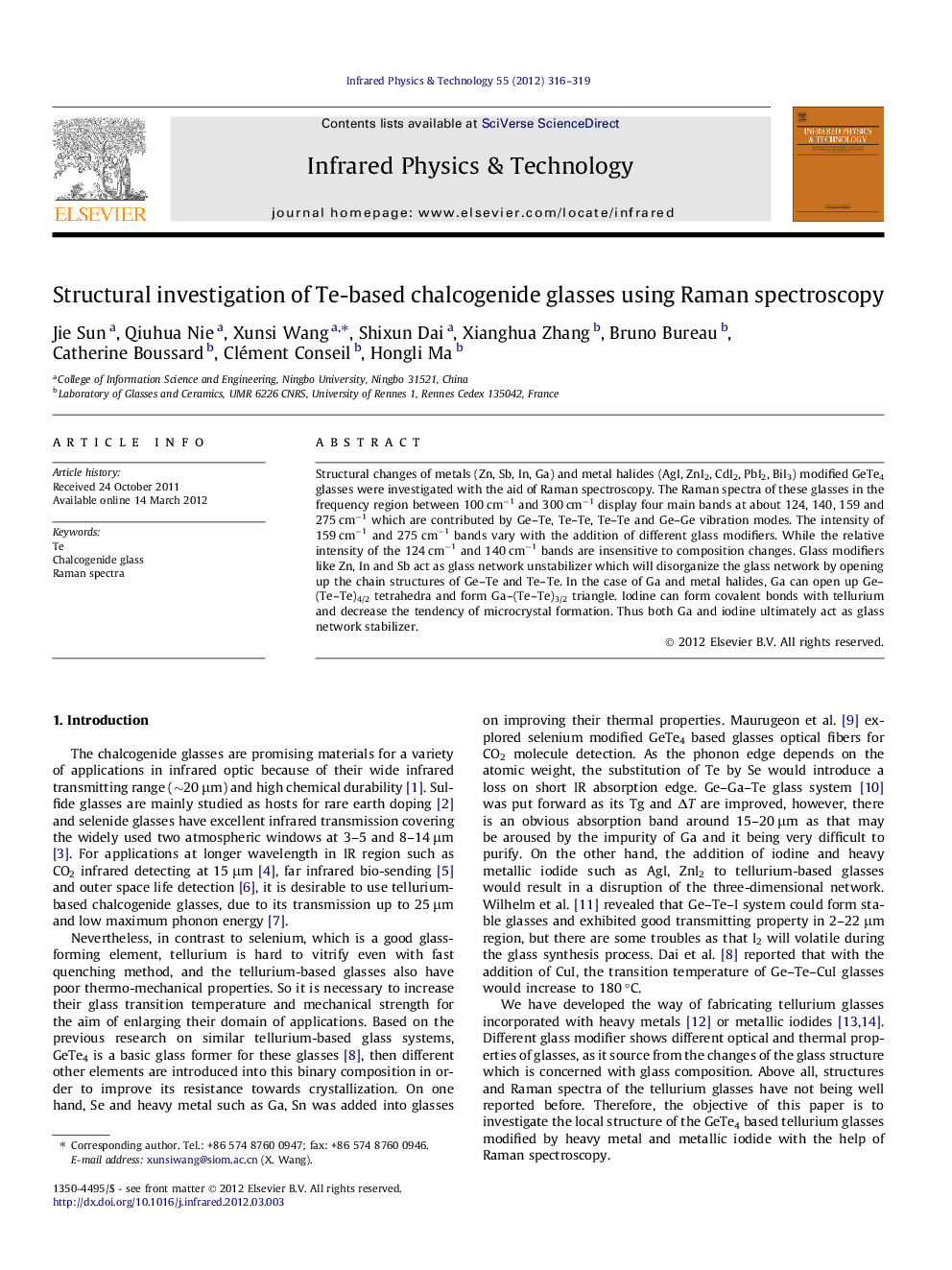| Article ID | Journal | Published Year | Pages | File Type |
|---|---|---|---|---|
| 1784523 | Infrared Physics & Technology | 2012 | 4 Pages |
Structural changes of metals (Zn, Sb, In, Ga) and metal halides (AgI, ZnI2, CdI2, PbI2, BiI3) modified GeTe4 glasses were investigated with the aid of Raman spectroscopy. The Raman spectra of these glasses in the frequency region between 100 cm−1 and 300 cm−1 display four main bands at about 124, 140, 159 and 275 cm−1 which are contributed by Ge–Te, Te–Te, Te–Te and Ge–Ge vibration modes. The intensity of 159 cm−1 and 275 cm−1 bands vary with the addition of different glass modifiers. While the relative intensity of the 124 cm−1 and 140 cm−1 bands are insensitive to composition changes. Glass modifiers like Zn, In and Sb act as glass network unstabilizer which will disorganize the glass network by opening up the chain structures of Ge–Te and Te–Te. In the case of Ga and metal halides, Ga can open up Ge–(Te–Te)4/2 tetrahedra and form Ga–(Te–Te)3/2 triangle. Iodine can form covalent bonds with tellurium and decrease the tendency of microcrystal formation. Thus both Ga and iodine ultimately act as glass network stabilizer.
► Firstly study the structural change of metal and metal halide modified GeTe4 glass. ► The 124 cm−1and 140 cm−1 bands (Ge–Te, Te–Te) are insensitive to composition change. ► Zn, In and Sb will open up the chain structures of Ge–Te and Te–Te. ► Both Ga and metal halide (iodine) ultimately act as glass network stabilizer.
